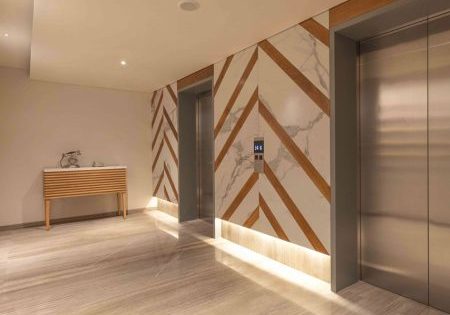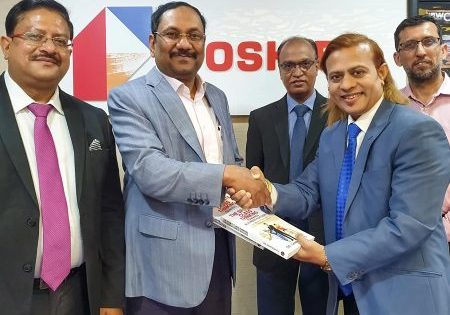In this Readers’ Platform, your author discusses changes coming to the VT industry.
As I write this article, a famous quote just flashed into my mind: “The measure of intelligence is the ability to change.” So true it is. Two years of this deadly pandemic has completely redefined our lives, the way we live and the way the world transacts. The change is here to continue, and I am sure this change will be more rapid henceforth. Those who adapt survive; the rest struggle and perish.
I have tried here, in this essay, to envision futuristic transformation trends in the vertical-transportation (VT) industry. This industry has had a very conservative journey with an unchanged business strategy, across geographies irrespective of their size for decades. It is rare that these organizations ever risk making changes to their time-tested transaction models in order to do business.
Information technology (IT) has been and continues to be a major influencer of change across the globe. Even though many companies are now majorly into developing software systems for their benefits, these — specifically in the VT industry — have been mostly limited to management of key internal processes and never evolved to interface with the client. These adaptations have been more toward creating smarter and standardized workflow systems for data management. Rarely have elevator companies tried to allow the customer in, which most think would be an infringement into their private domain.
“Initiatives come from anywhere and everywhere.”
— JACK: Straight from the Gut
I am convinced it requires vision and courage to integrate customers within your systems and provide processes that are absolutely transparent in engagement, independent as well as responsive.
The new generation customer (entrepreneur) wants faster outcomes. Market expectations rapidly change, and the fast-food days are here to stay. To wait is indeed provoking. The customer wants a seamless experience in engaging with the vendor, an experience that does not subjectify his decision. He expects his choices to be bias-free and absolutely objective. However irrationally blind this statement may sound to the elevator industry, this nevertheless is the reality. The buyer wants price assurance, transparent dealing and ease of buying.
Online selling isn’t new, but selling elevators online is boldly new.
Leaders lead the change. I remember when the banking sector brought in the IT transformation, there was fierce resistance from both within and outside. Now, no one would step into a bank that is not computerized. Even post offices are transacting using computers. Payments are being made using smartphones everywhere, and money is turning digital. It is unimaginable the way global digital transformation is happening. Now is the right time for this futuristic metamorphosis in the VT industry.
One leading elevator company has already taken the challenging step to sell elevators online. Critics, please excuse. Online selling isn’t new, but selling elevators online is boldly new. This, I am sure, will be setting a trend that will soon bring most elevators to this type of sales in the future. You may start seeing third-party transactable online platforms facilitating online sales of VT equipment in real-time, with whom the elevator companies can partner to sell their products. This will certainly help smaller companies trade online. Buying elevators would indeed become more trouble-free, simple and straightforward.
Most elevator companies are integrators — the smaller ones, for sure. They buy most of their parts in the open market from manufacturers of components and integrate them to offer a complete product. Even large companies, of course, buy many components from the market. This helps them in two ways:
- Lower capital investments in large-scale plants and machineries
- Reduction in cost of inventory, which drastically reduces overhead and overall price
These are sustainable business options that allow adequate room for innovation.
Elevator companies should outsource maintenance. With connected equipment, monitoring maintenance efficiency should not be a major task.
Quality assessment and management are major factors of concern during outsourcing or purchasing of components and parts. Qualified third-party accredited inspection bodies can help fill the gap in managing quality both at the point of manufacturing as well as at the destination of supply. The National Accreditation Board for Certifying Bodies (NABCB) qualify inspection bodies that comply with ISO 17020:2012.
These bodies have the capability to independently and impartially inspect and certify quality and compliance. Large companies rely on these inspection bodies for evaluation of their purchase. The buyer can insist component suppliers get their tests done through NABL Accredited Labs (ISO 17025:2017) that can test and provide reliable assurance on key components that need testing for conformity.
The next big challenge and concern is a resource for installation and maintenance. A lean organization is a green organization. Subcontracting is already in vogue for installation, while there exists a gap in addressing the technical competency of the resource. It is wise to get assurance on competency from agencies that can certify persons. There are many organizations that are accredited for compliance to ISO 17024:2012 and can certify persons for their capability and skill.
We already have large subcontracting organizations offering trained manpower for installation, and the right approach would be to ask for certified personnel as well as set key performance indicators (KPIs) for installation to ensure accuracy, efficiency, proper utilization of resources and timely completions.
The final quality of the installed elevators can be handled by inspection bodies members, who can provide a source of assurance to customers. The reliability of reports given by accredited inspection bodies is very high and is a legally acceptable document.
I see a totally different product and maintenance scenario panning out. While, technologically, there may be very little scope, except for improvement in efficiency, products will become plug-and-play modules that are compact and commutable, requiring the least skill to install test and commission.
Elevator companies should outsource maintenance. With connected equipment, monitoring maintenance efficiency should not be a major task. Here, too, fixing a competent agency with an adequately skilled and certified resource is important. Securing is a legally well-framed contract to safeguard the interest of both parties and ensure breaches are traceable and corrected is vital. A set of KPIs that will assure performance in terms of quality of work, response time, rectification time, handling of complaints and appeals is to be established.
Modular designs can help manage upgrades more easily and will create a revenue stream. Similarly, spare parts businesses also may start growing big. There could also come a time when the customer will have the ability to pick and choose the brand, the party that installs and the party that maintains. This, of course, needs some regulatory interference, and I am sure if this model is going to be an employment generator, governments would certainly be happy to intervene. Even now, large corporations are involved in the maintenance of other brand elevators globally.
With third-party maintenance, it is very important to have third parties inspect the elevators. Periodic third-party inspections will assure performance and compliance to acceptable/agreed work methodologies and codes.
Technology helps create flexible systems that can support this futuristic business form and integrate all stakeholders. Customers can buy elevators, track supplies, know the status of installation or job progress, renew their annual maintenance contracts, raise grievances and make payments online. One just needs a smart, small team to manage all this and great courage.
Innovation is the key to success. Challenging the present and embracing change is a brave man’s fortitude. Change is progressive.
Get more of Elevator World. Sign up for our free e-newsletter.







